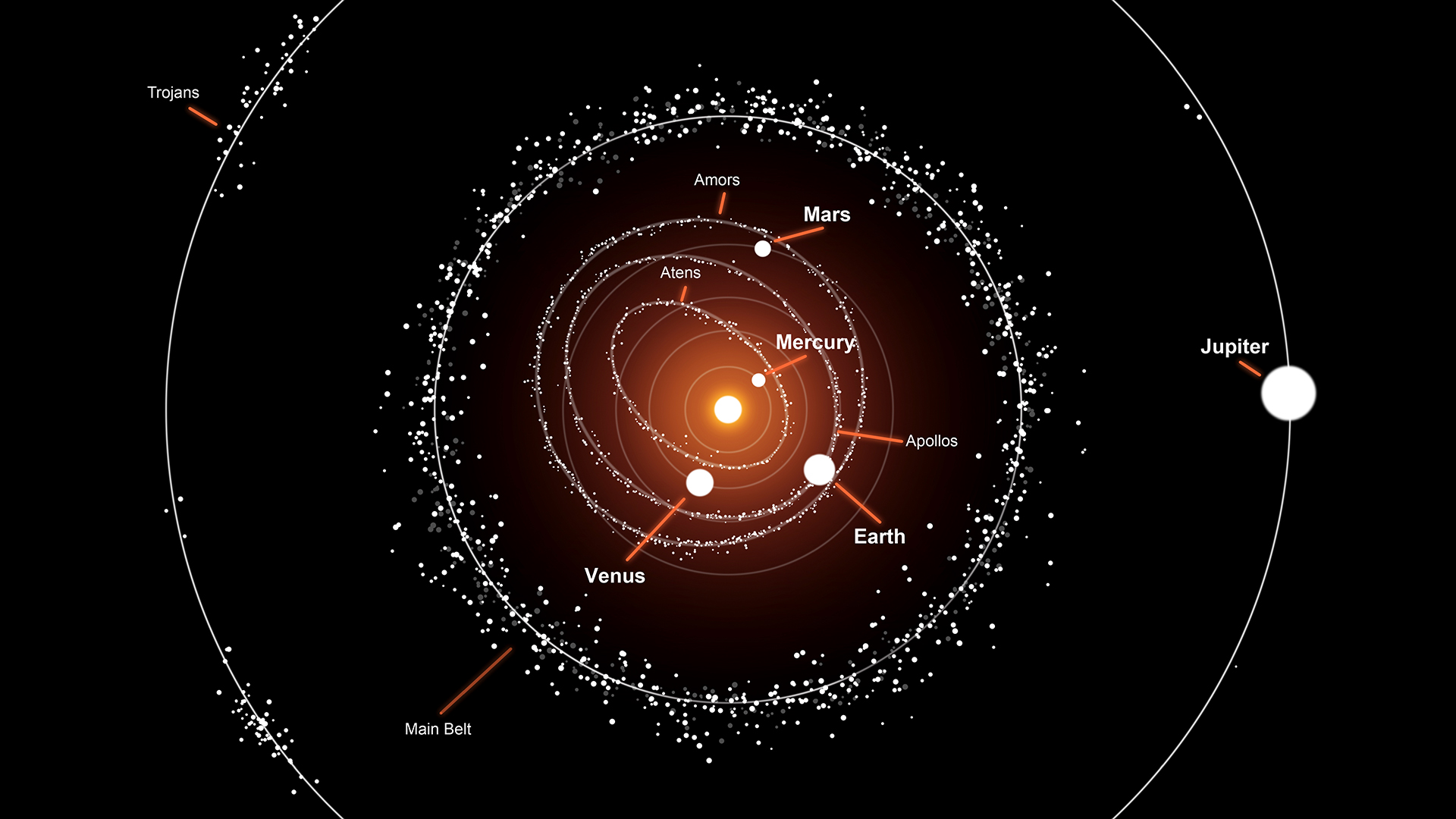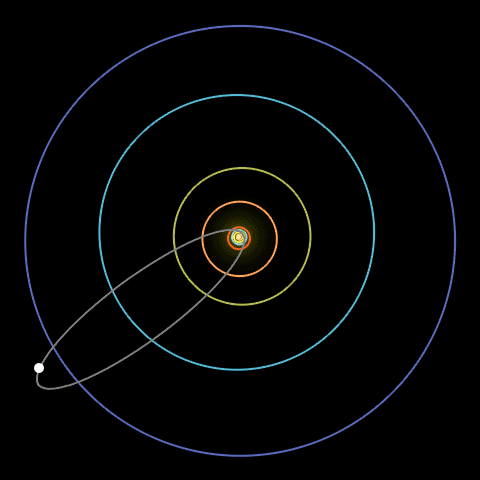
Many maps of the solar system make it look as though everything in space moves in perfect, concentric circles. Planets orbit the sun, and moons orbit the planets. So that must be the case for everything in space, right?
Not quite. Orbits form all sorts of shapes. "Planets and other bodies rarely go around in perfect circles," Paul Wiegert, an astronomer at the University of Western Ontario, told Live Science. Comets have so-called hyperbolic orbits, meaning they slingshot from one point and back again. Asteroids can travel in complicated loops around planets. Even the moon's orbit is wobbling, slowly expanding year after year as it twirls around the Earth.
So how do these diverse paths form?
First, it's important to understand the physics behind motion in space. When it comes to orbits, there are two main forces at work. The first is momentum: When an object is in motion, it has momentum that propels it in a specific direction. The second is gravity, an attractive force, said Renu Malhotra, a professor at the University of Arizona who studies orbital dynamics. Objects, especially large ones like planets, have strong forces of gravity and so can pull moving objects toward them. Together, the push of momentum and the pull of gravity form orbits.
Related: How many satellites orbit Earth?
When gravity and momentum are balanced, orbits theoretically form an ellipse, or oval. This was denoted by Johannes Kepler, a 17th-century German scientist who constructed mathematical models to figure out how to explain the movements of planets. Before Kepler, scientists thought planets moved in perfect circles. But in particular, Mars' orbit, the most elliptical out of all the planets in our solar system, didn't fit that model. Kepler figured out that an ellipse was the answer to Mars' path, and explained the path of other planets as well — shaping a law that forms the basis of how we understand orbits today.
But the elliptical orbits that Kepler theorized are only approximations of what planets, asteroids and other bodies are actually doing, Malhotra told Live Science. In reality, the forces of momentum and gravity on an object are ever-shifting. If the momentum is too strong, or if gravity is too weak, different patterns can form. Comets, for example, are attracted by the gravity of the sun, but they have extremely high momentum. This allows them to zip through the galaxy from one point to the next, forming a long oval orbit.
Get the world’s most fascinating discoveries delivered straight to your inbox.
The vast quantity of objects in the universe can also complicate the dynamics of orbits, Malhotra said. More objects add more sources of gravity, which can make the motion of a planetary body twist and turn into more complicated paths.
For instance, if an asteroid is traveling through the solar system, it ends up being pulled by not only the sun but also any nearby planet — what Wiegert called "a dynamical relationship." These bodies are often called quasi-satellites, or quasi-moons.
The Trojan asteroids, for instance, have a dynamical relationship with Jupiter and the sun. They technically travel around the sun, sharing Jupiter's orbit by hovering either just ahead or behind the planet. But Jupiter's gravity also pulls the asteroids into a warped oval trajectory around the planet. These orbits can resemble a tadpole or even horseshoe, seesawing from one point to the next.
Another example is Kamo'oalewa, a recently discovered quasi-satellite near Earth that's hypothesized to be a chip off the moon. "It's actually orbiting the sun, but it's orbiting close enough that the Earth's gravity modifies its orbit a lot," said Malhotra, who, along with colleagues, published a number of papers on this quasi-satellite.
These "unusual orbits are quite unstable," she said. But what's interesting about Kamo'oalewa is that it has been hanging around Earth for centuries. It's found a niche amid all of the dynamic forces at work in orbits, she said.

Alice Sun is a science journalist based in Brooklyn. She covers a wide range of topics, including ecology, neuroscience, social science and technology. Her work has appeared in Audubon, Sierra, Inverse and more. For her bachelor's degree, she studied environmental biology at McGill University in Canada. She also has a master's degree in science, health and environmental reporting from NYU.






